Discover 8 hidden attractions, cool sights, and unusual things to do in Wethersfield (United States). Don't miss out on these must-see attractions: Webb-Deane-Stevens Museum, Joseph Webb House, and First Church of Christ. Also, be sure to include Buttolph–Williams House in your itinerary.
Below, you can find the list of the most amazing places you should visit in Wethersfield (Connecticut).
Table of Contents
Webb-Deane-Stevens Museum
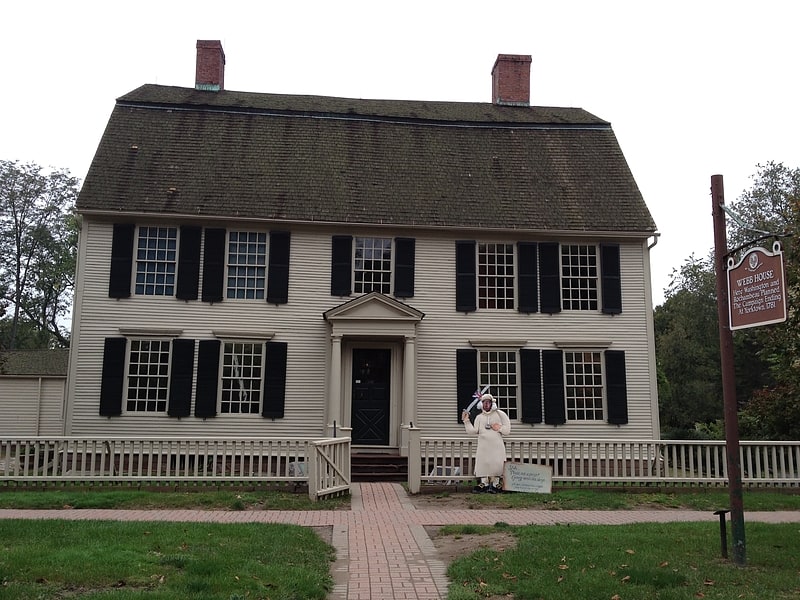
Museum in Wethersfield, Connecticut. The Webb-Deane-Stevens Museum, located in Wethersfield, Connecticut, is owned and operated by the National Society of the Colonial Dames of America in Connecticut. The museum features three 18th-century houses that sit on their original sites in the center of Old Wethersfield: the 1752 Joseph Webb House, the 1769 Silas Deane House and the 1789 Isaac Stevens House. The first two houses are listed as National Historic Landmarks and the last home is listed on the National Register of Historic Places in Connecticut. The houses are next door to each other.
The Joseph Webb House is the museum's main headquarters and has been restored to a late 18th-century appearance. There is a Colonial Revival garden out back and a 19th-century barn. The Silas Deane House has been restored to a mid-18th-century appearance. The Isaac Stevens House has been restored to reflect a middle-class family of the 1820s-1830s using many original family items.
The Webb-Deane-Stevens Museum also manages the nearby 1715 Buttolph–Williams House which is owned by Connecticut Landmarks. The interior features rare 17th- and early 18th-century antiques and was the setting for Elizabeth George Speare’s Newbery Medal-winning novel The Witch of Blackbird Pond (1958).
The Museum is accredited by the American Alliance of Museums.[1]
Address: 211 Main St, 06109-2339 Wethersfield
Joseph Webb House
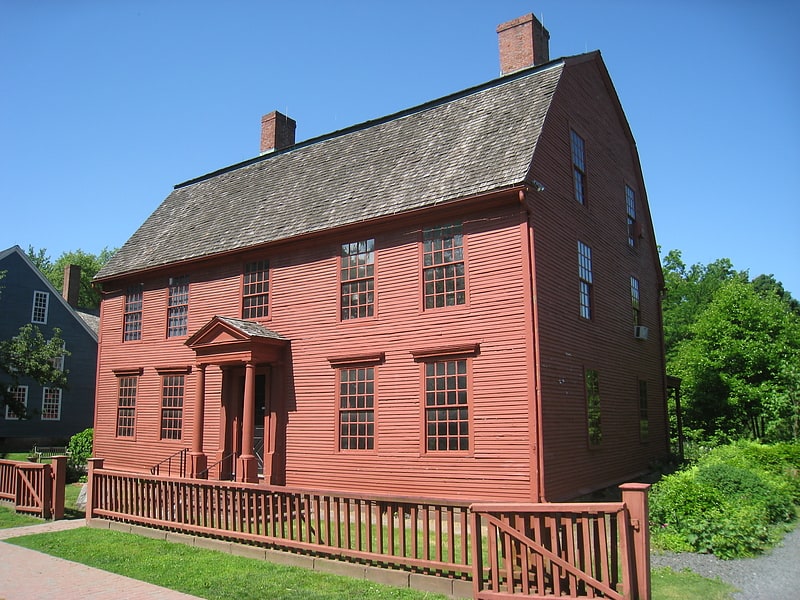
Museum in Wethersfield, Connecticut. The Joseph Webb House is a historic Georgian-style house at 211 Main Street in Wethersfield, Connecticut. It was designated a National Historic Landmark for its significance as the location of the General George Washington/Rochambeau five-day military conference held in 1781 during the American Revolutionary War that preceded the Siege of Yorktown, the last major battle of the war in North America. Washington, in his words, "lodged...at the house of Joseph Webb", on the May 17, 1781. Located in Old Wethersfield, the Joseph Webb House is owned by the Webb-Deane-Stevens Museum and serves as its headquarters. The interior has been restored to an 18th-century appearance and the grounds feature a Colonial Revival garden and 19th-century barn in back.
Originally built in 1752 for Joseph Webb, the house remained in the family until around 1820 when it was sold to Martin Welles. It remained in the Welles family until 1913 when it was purchased by a group of businessmen who intended to use it as an athenaeum or a library, but a lack of funds saw its resale to Wallace Nutting. The house opened in 1916 as a part of Nutting's "Chain of Colonial Picture Houses". Nutting sold the house to the National Society of the Colonial Dames of America in 1919, who continue to operate it as a historic house museum. In 1996 and later in 2007, Nutting's murals and interpretive Colonial Revival elements were acknowledged and integrated with an exhibit showing his influence.[2]
Address: 211 Main Street, Wethersfield
First Church of Christ
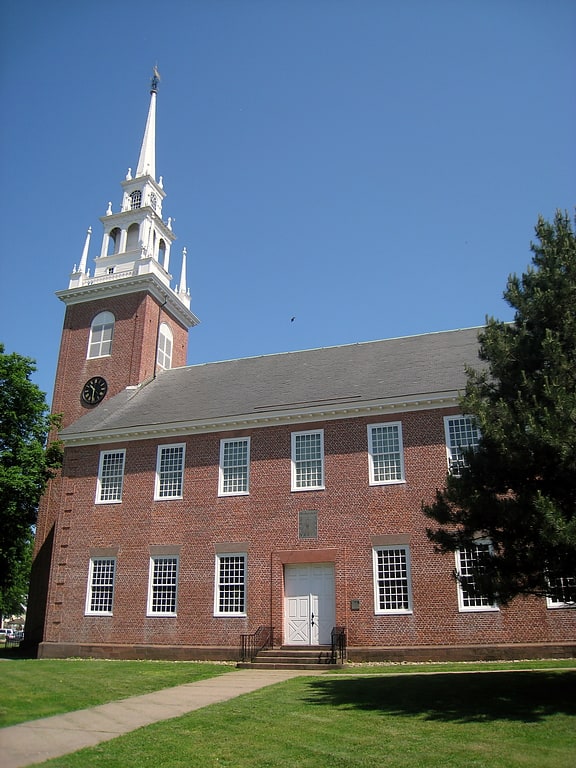
Church of christ in Wethersfield, Connecticut. The First Church of Christ, Wethersfield, is an American Colonial Era church in the Old Wethersfield Historic District of Wethersfield, Connecticut. The congregation was founded in 1635, and the present brick Meetinghouse was built in 1761–1764 with its distinctive white steeple. The church cemetery also dates from the 1600s. The congregation was affiliated with the United Church of Christ from 1961 through 2004. The interior of the Meetinghouse was built as a crosswise room, altered considerably in 1838 and 1882, and returned to the original layout in 1971–1973.
According to a plaque at the tower entrance door, George Washington attended church there on May 20, 1781, during a conference with Count de Rochambeau at the nearby Joseph Webb House to plan the conclusion of the American Revolutionary War.
The church and its Austin organ hosted the first eighteen years of the Albert Schweitzer Organ Festival USA. This competition for young organists has been held annually since 1998 in the Hartford area, and was co-founded by First Church music minister David Spicer.[3]
Address: Wethersfield, 250 Main Street
Buttolph–Williams House
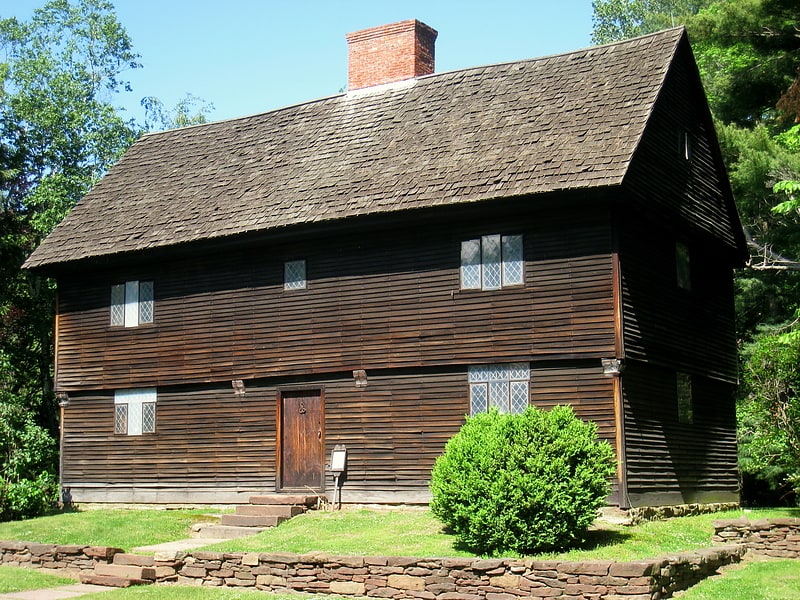
Museum in Wethersfield, Connecticut. The Buttolph–Williams House is a historic house museum at 249 Broad Street in Wethersfield, Connecticut. Built in 1711, it is one of the oldest surviving houses in the town. It is owned by Connecticut Landmarks, a historic preservation organization, and is open for regular tours between May and October. it was designated a National Historic Landmark in 1968 for its significance as an extremely well-preserved example of early colonial architecture.[4]
Address: 249 Broad Street, Wethersfield
Silas Deane House
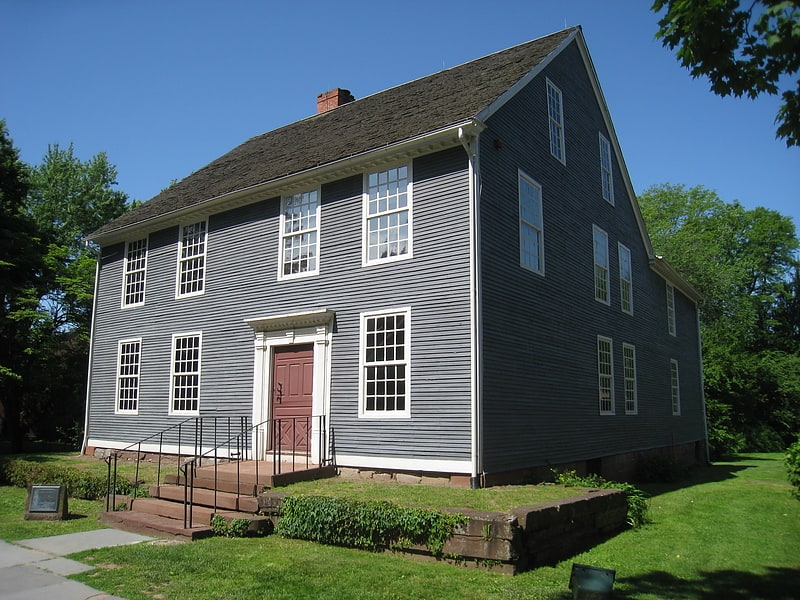
Museum in Wethersfield. The Silas Deane House is a historic house museum at 203 Main Street in Wethersfield, Connecticut. Built in 1766, this National Historic Landmark was the home of Silas Deane, the first foreign diplomat for the United States.[5]
Wethersfield Cove
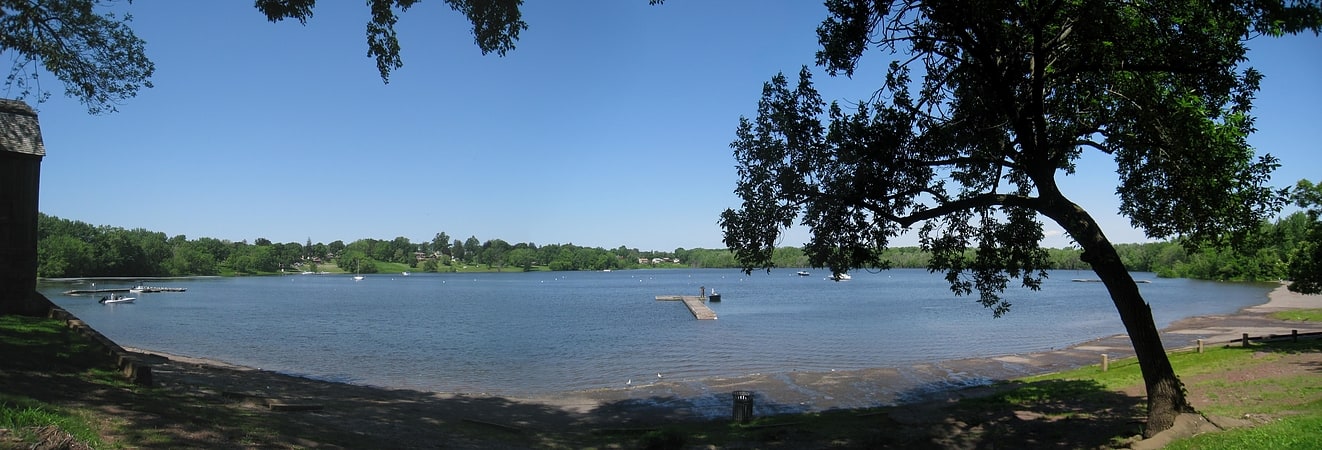
The Wethersfield Cove is a natural inlet in Wethersfield, Connecticut, and a former site of much local trade and travel.[6]
Old Wethersfield
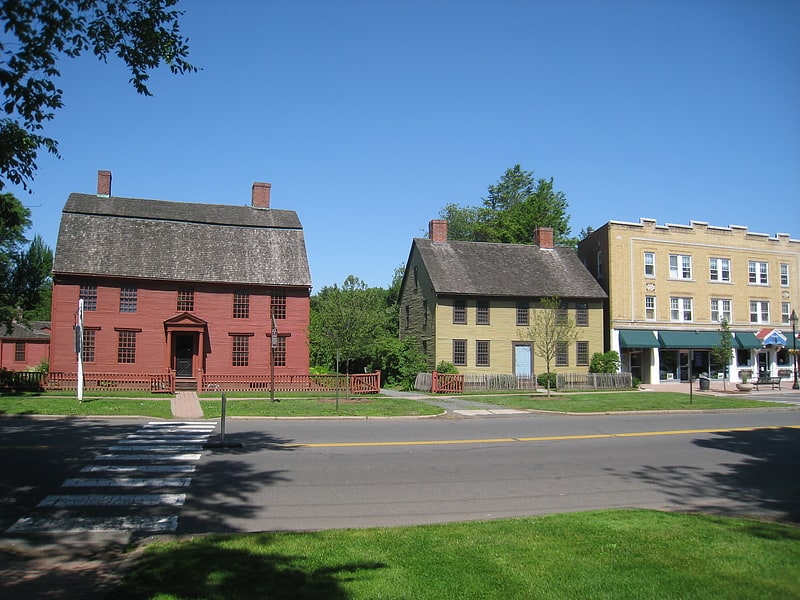
Old Wethersfield, also known as Old Wethersfield Historic District, and historically known as Watertown or Pyquag, is a section of the town of Wethersfield, Connecticut, roughly bounded by the borders of the adjacent city of Hartford and town of Rocky Hill, railroad tracks, and I-91. The site of the first permanent European-American settlement in the state of Connecticut, it was added to the National Register of Historic Places in 1970.
The land for this colonial settlement was acquired from the Massachusetts Bay Colony. Wethersfield served as a transportation hub on the Connecticut River in the early years.
The Old Wethersfield Historic District was established under town statutes in 1962, "to preserve and protect the many architectural phases of a Connecticut River Community in continual growth from 1634 to the present." Eight years later, in 1970, the Old Wethersfield Historic District was listed on the National Register of Historic Places. The village includes 50 houses that were built before the American Revolutionary War, plus about 250 additional houses built before the 20th century, about 100 of which were built earlier than the American Civil War.
The historic district listed on the National Register includes 1200 structures over 1,300 acres (5.3 km2). Of these 100 date from colonial times. Many of the early frame and brick houses were built by sea captains around the town green.
There are three National Historic Landmarks in Old Wethersfield:
- Buttolph–Williams House — 249 Broad St.
- Joseph Webb House — 211 Main St.
- Silas Deane House — 203 Main St.
Another prominent historic building in the district is:
- First Church of Christ, Wethersfield
The district includes Wethersfield's green, which is "a slender diamond nearly a half-mile long".[7]
Roger Butler House
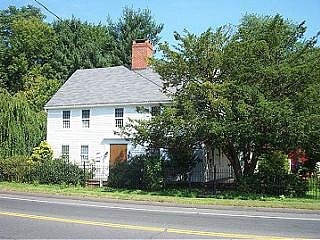
The Roger Butler House is a historic house located in Wethersfield, Connecticut. Built about 1769, it is a well-preserved example of Georgian architecture, its only principal alteration the Italianate entrance surround. The house was listed on the National Register of Historic Places on August 15, 1996.[8]